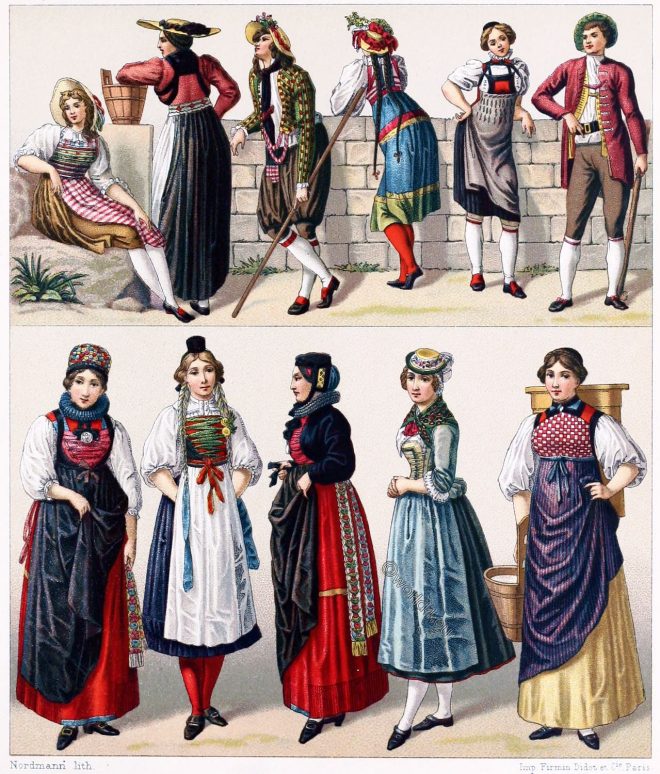The Corset and the Crinoline. Chapter VII. Starving and Lacing. Louis XVI Dress in 1776. George III.
Category: 1810
Caravansary at Kustchiuk Czemege
Caravansaries are public edifices established in almost every town and village throughout the Turkish empire
Swiss folk costumes at the beginning of the 19th century.
Swiss folk costumes from the cantons of Lucerne, Fribourg, Zug, Bern, Schwyz, Schaffhausen and Valais at the beginning of the 19th century.
Empire Romantic period. Formal evening wear. Party dress.
The party dress here shows definite leanings toward the Romantic period, which began with 1815.
Costumes and shawls. French directorate, consulate and first Empire.
Costumes and scarves in the 18th and 19th century. The fashion of classicism during the French directorate, consulate and first empire.
The Mosque at the site of the ancient temple of Solomon at Jerusalem.
Temple of Solomon, or rather the Mosque (Al-Aqsa) so called from its occupying the site of the ancient temple at Jerusalem in the eastern part of the city.
Bethlehem. The Grotto of the Nativity. The Chapel of the Innocents.
On the opposite side of the grotto there is an altar (seen on the right hand in the drawing), where it is said the magi of the East.
Pera. A quarter of the great suburb of Constantinople.
Pera was the name of a district of Constantinople, or more properly a quarter of the great suburb of Galata located north of the Golden Horn.
A Procession of the Emperor Akbar Shah II surrounded by his court.
The procession represents the Emperor, Akbar Shah II., surrounded by all the pomp of his court, proceeding along the edge of the Jumna river, accompanied by the British Resident and his staff. It is very characteristic of the past glories of the great Moghul House.
Icelandic costumes. Travels in Iceland during the summer of the year 1810.
Travels in the island of Iceland during the summer of the year MDCCCX, by George Steuart Mackenzie a. o.










